NHL 25 Review
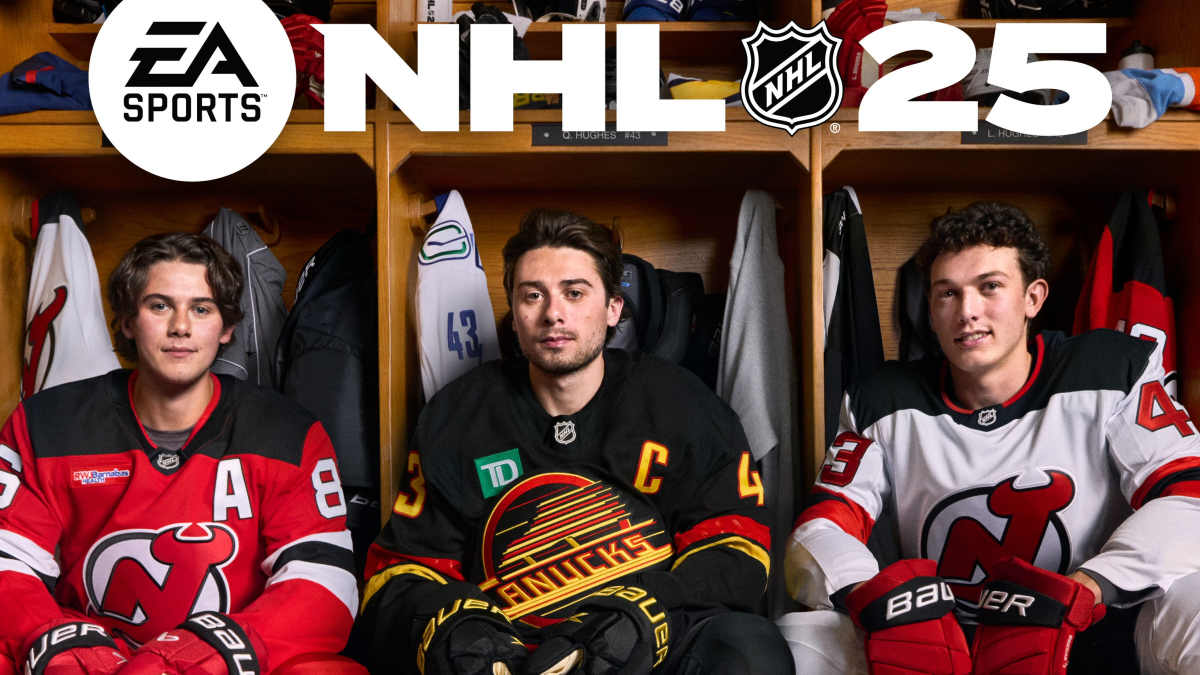
As the NHL franchise turns the page to its first current-gen exclusive release with NHL 25, the excitement for what this next chapter could bring was palpable. Leaving behind the PS4 and Xbox One, this year’s entry is exclusively available on the PlayStation 5 and Xbox Series X|S. The question on every hockey fan’s mind is: Does NHL 25 leverage the full power of these platforms to deliver a next-gen hockey experience? With promises of enhanced gameplay, sharper visuals, and a series of new features, NHL 25 has a lot to live up to. However, the result is a bit of a mixed bag.
A Next-Gen Shift: Goodbye to Old Consoles
One of the most noticeable upgrades in NHL 25 is the graphical overhaul, made possible by the power of current-gen consoles and the introduction of SAPIEN technology. Player models are more detailed than ever, from lifelike facial features to jersey physics. The detail in the uniforms, such as snow accumulating on players' pants, adds a layer of immersion that previous games lacked.
The menu presentation is another area where NHL 25 shines. Featuring today's top NHL stars, it feels like an authentic representation of the sport’s modern era. Navigation is smooth and intuitive, with clear paths to game modes and franchise settings. The new Infinite Camera System takes replays to the next level, offering a broadcast-inspired look that captures dynamic angles using drones, wire cams, and more. This system gives replays a more cinematic and engaging feel, adding to the authenticity of the experience.
However, despite these visual and presentational improvements, not everything is as next-gen as it seems. The commentary, for instance, feels almost identical to last year’s game, failing to capture the excitement of live broadcasts. This becomes particularly noticeable in intense matches, where more dynamic and reactive commentary could elevate the experience. While the graphics have leaped, other aspects of the presentation—like the commentary—still feel stuck in the last generation.
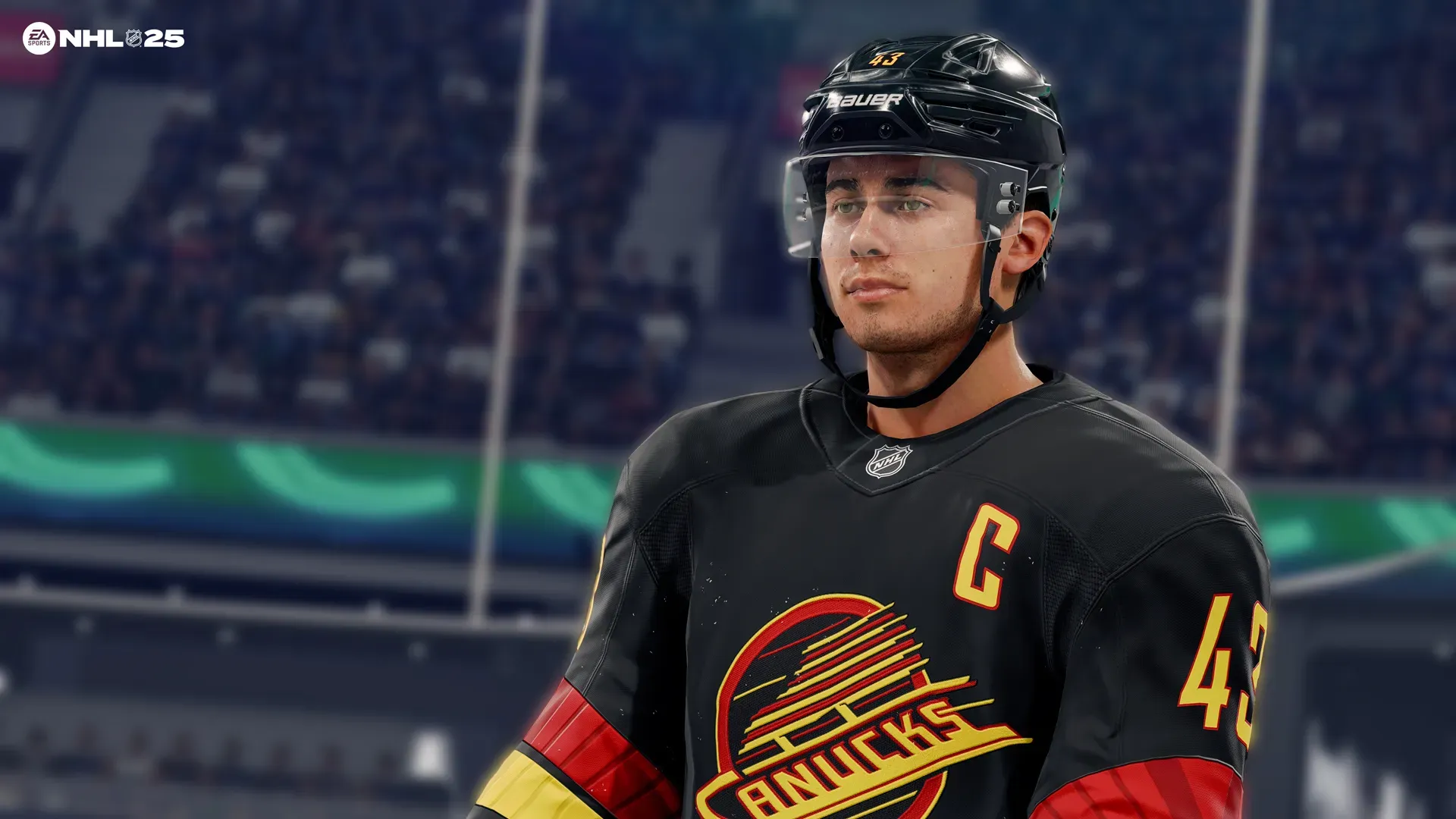
Gameplay: Some Innovation, Yet Mostly Familiar
NHL 25 introduces several gameplay features aimed at making the action on the ice more fluid and responsive. The on-ice evolution brings fresh abilities for both human and AI players, introducing a user-initiated skating mode that gives skaters more control over their movement and boosts explosiveness during critical moments. EA has also overhauled the AI system, making CPU players more aware of their surroundings and smarter in executing plays. This upgrade is particularly noticeable in high-pressure situations, where AI players now seem to make better decisions, offering improved positioning and movement.
The new skill-based one-timer system is an exciting addition that adds a layer of tension and anticipation. In NHL 25, the game heightens the importance of reading the attacking zone and finding an open teammate for a one-timer. When executed correctly, these shots can be deadly, but they can also feel slightly overpowered at times. Hopefully, EA can fine-tune this aspect with future patches to maintain the balance between offensive excitement and defensive competitiveness.
Yet, despite these changes, the overall feel of the gameplay remains similar to NHL 24. The game speed is noticeably slower, which might appeal to fans looking for a more methodical experience. However, for those used to the fast-paced action of previous entries, this change might take some getting used to. While the on-ice evolution and skill-based one-timers bring fresh elements, these features aren't enough to fully differentiate NHL 25 from its predecessor. The gameplay still feels familiar, and the ICE-Q technology, meant to enhance realism, doesn’t bring the significant leap in quality that many fans were expecting.
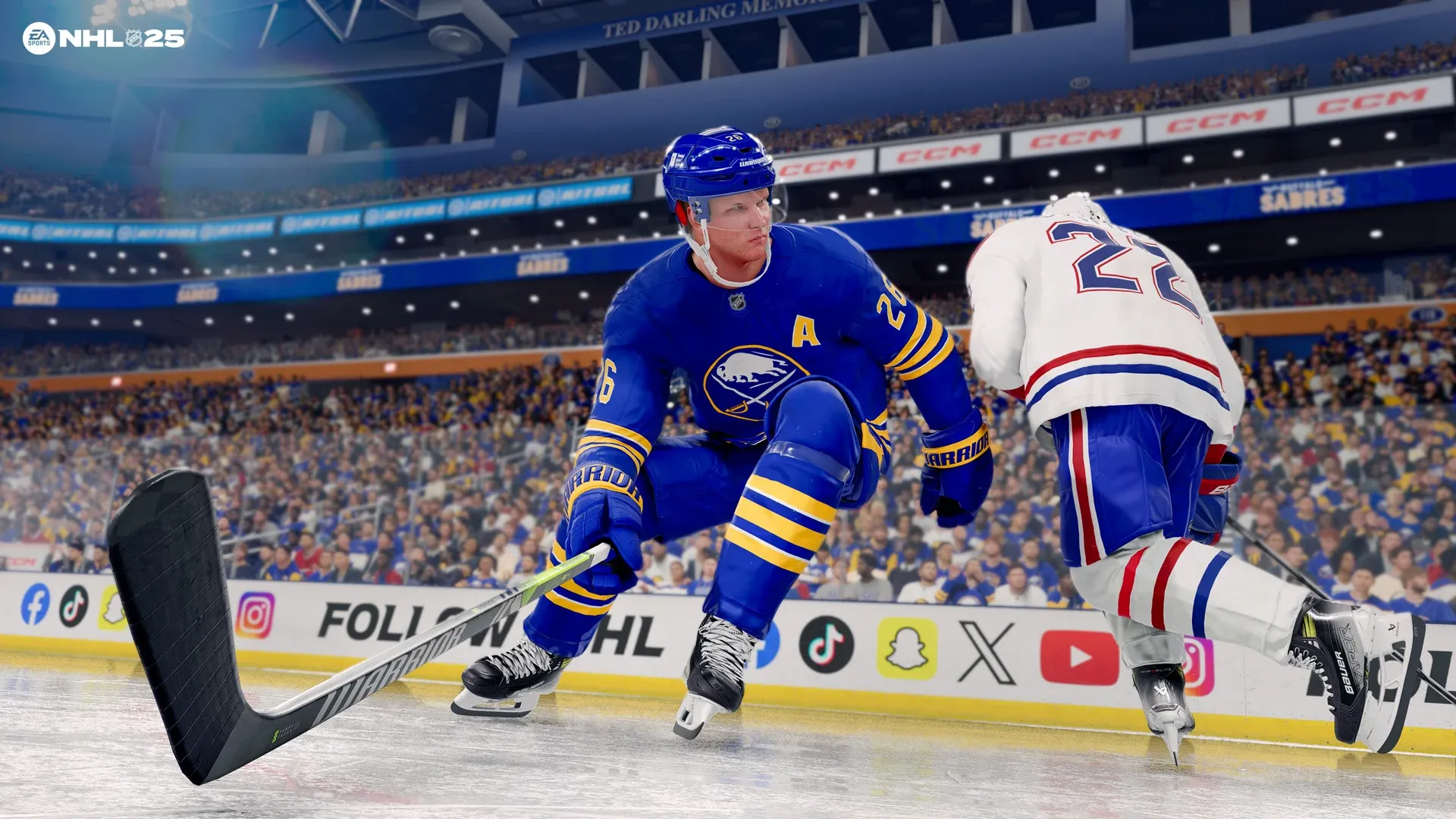
A Refined Animation Set: More Fluidity on the Ice
One area where NHL 25 shines is in its new animation set. The introduction of smoother and more varied animations adds a layer of authenticity that helps immerse players in the action. EA’s focus on providing more fluid, realistic animations is especially noticeable in moments of tension—whether you're racing for the puck in the neutral zone or positioning yourself for a critical defensive stop.
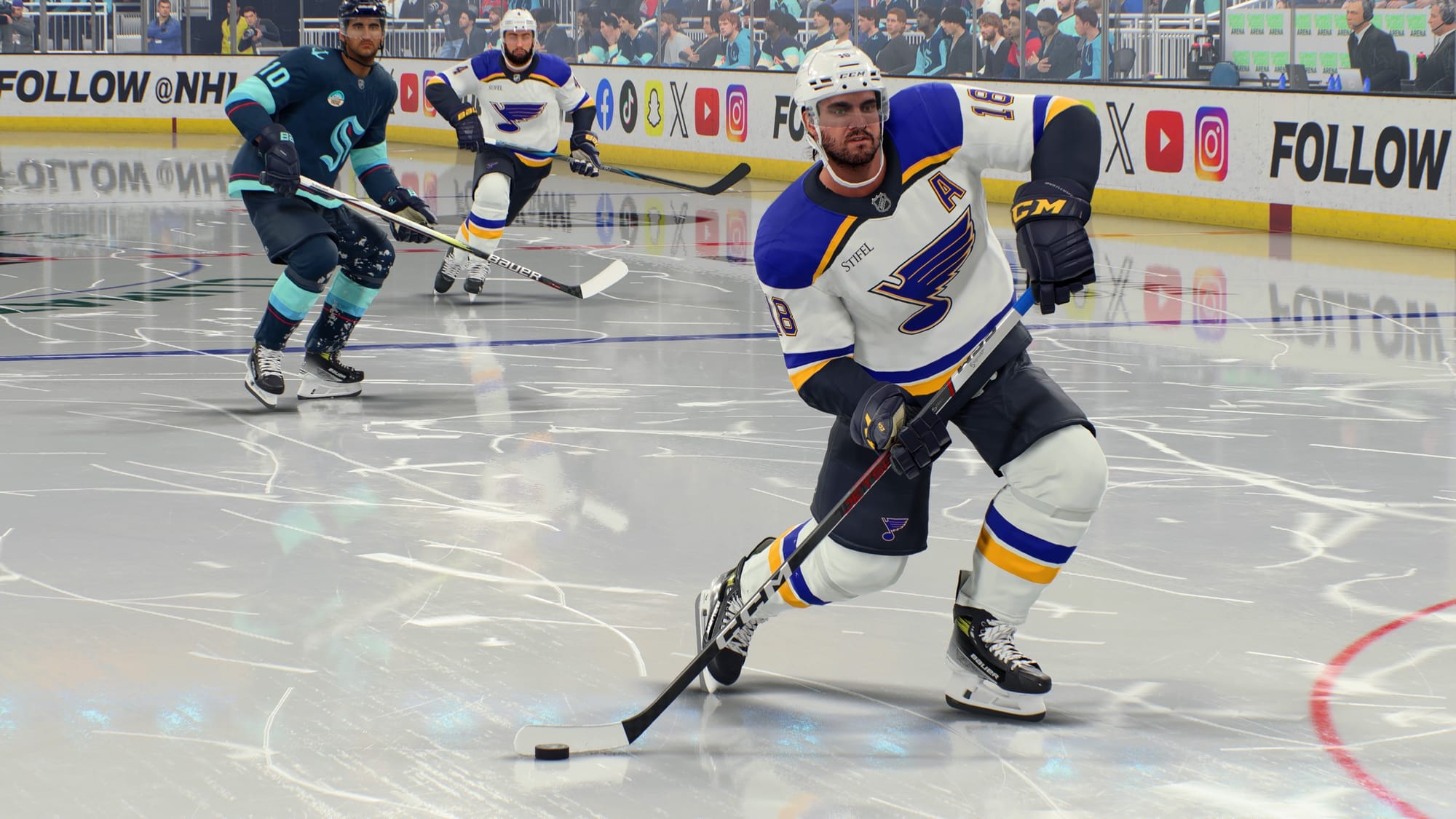
Slower Game Speed: A Deliberate Shift
One of the most noticeable changes in NHL 25 is the slower game speed. This design choice seems aimed at making the game more strategic, requiring players to be more deliberate in their movements and decision-making. While some players may appreciate this shift, others might find it jarring—especially if they’re accustomed to the faster pace of previous entries.
On the one hand, the slower speed allows for more thoughtful play, which can lead to exciting moments of build-up, particularly in the attacking zone. However, for those looking for the high-octane intensity that NHL games are known for, this change might feel like a step back.
Visual Overhaul: SAPIEN Technology and Frostbite Engine
One area where NHL 25 unquestionably excels is its visual presentation. Thanks to the power of the Frostbite Engine and the introduction of SAPIEN Technology, player models have received a massive upgrade. The new technology allows for more accurate character models, which are incredibly detailed and lifelike. Everything from the way jerseys move as players skate to the fine textures on equipment feels more realistic. The lighting on the ice and in the arenas also feels more dynamic, helping NHL 25 create one of the best-looking hockey games to date.
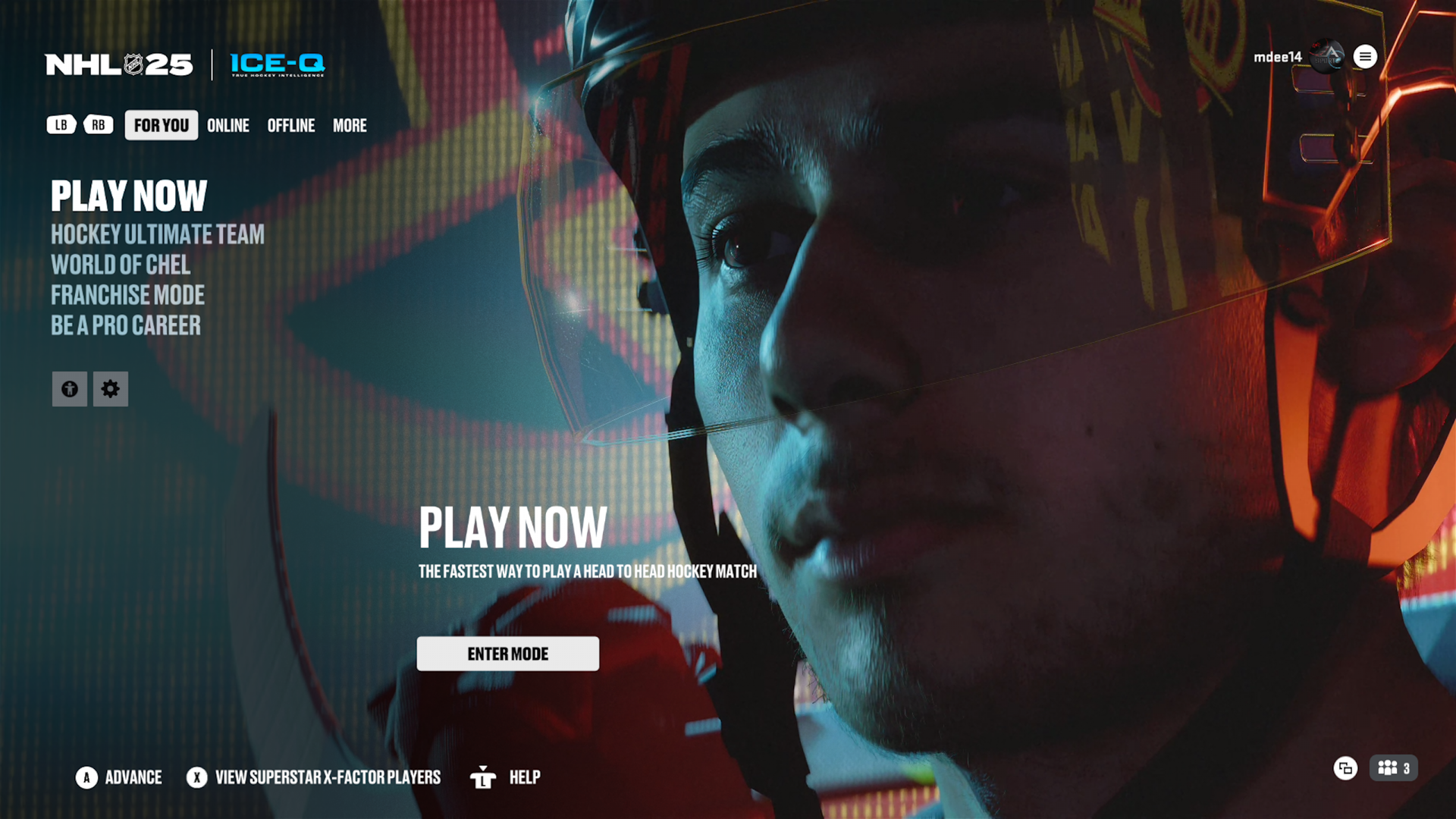
The main menu presentation is equally impressive, showcasing the game’s elite players with a sleek and modern design. It feels like a proper introduction to what should be a top-tier hockey experience. Yet, while the visual fidelity is top-notch, it's worth noting that the improvements here might not be enough for players who prioritize gameplay innovation over graphics.
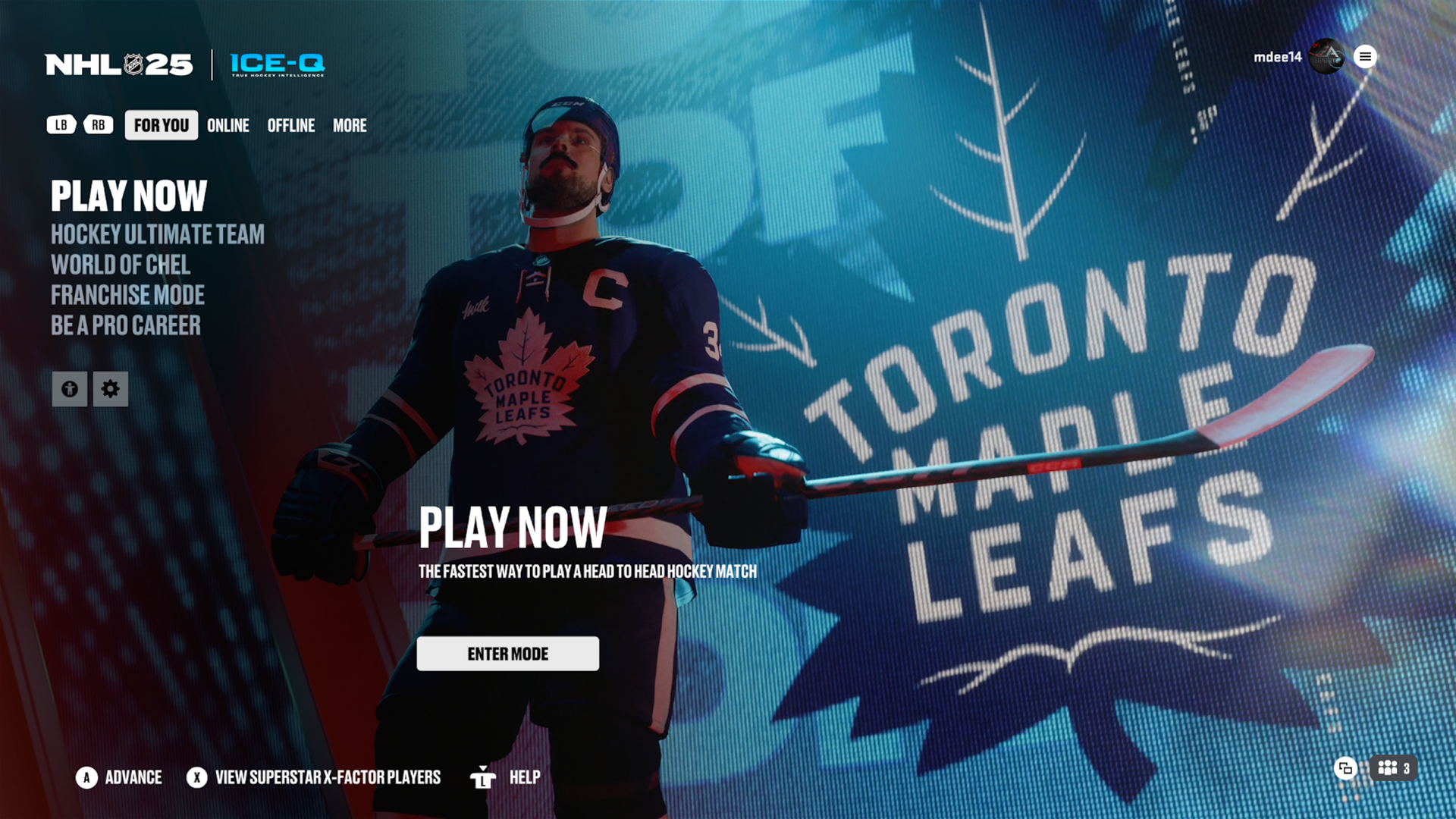
Grudge Match System: Rivalries Intensified
NHL 25’s Grudge Match System is one of the most exciting new additions to this year’s game. Rivalries have always been at the heart of hockey, and this system captures that competitive spirit in a new way. By tracking the history of matchups between teams across various game modes, both online and offline, the system adds layers of drama and context to each game.
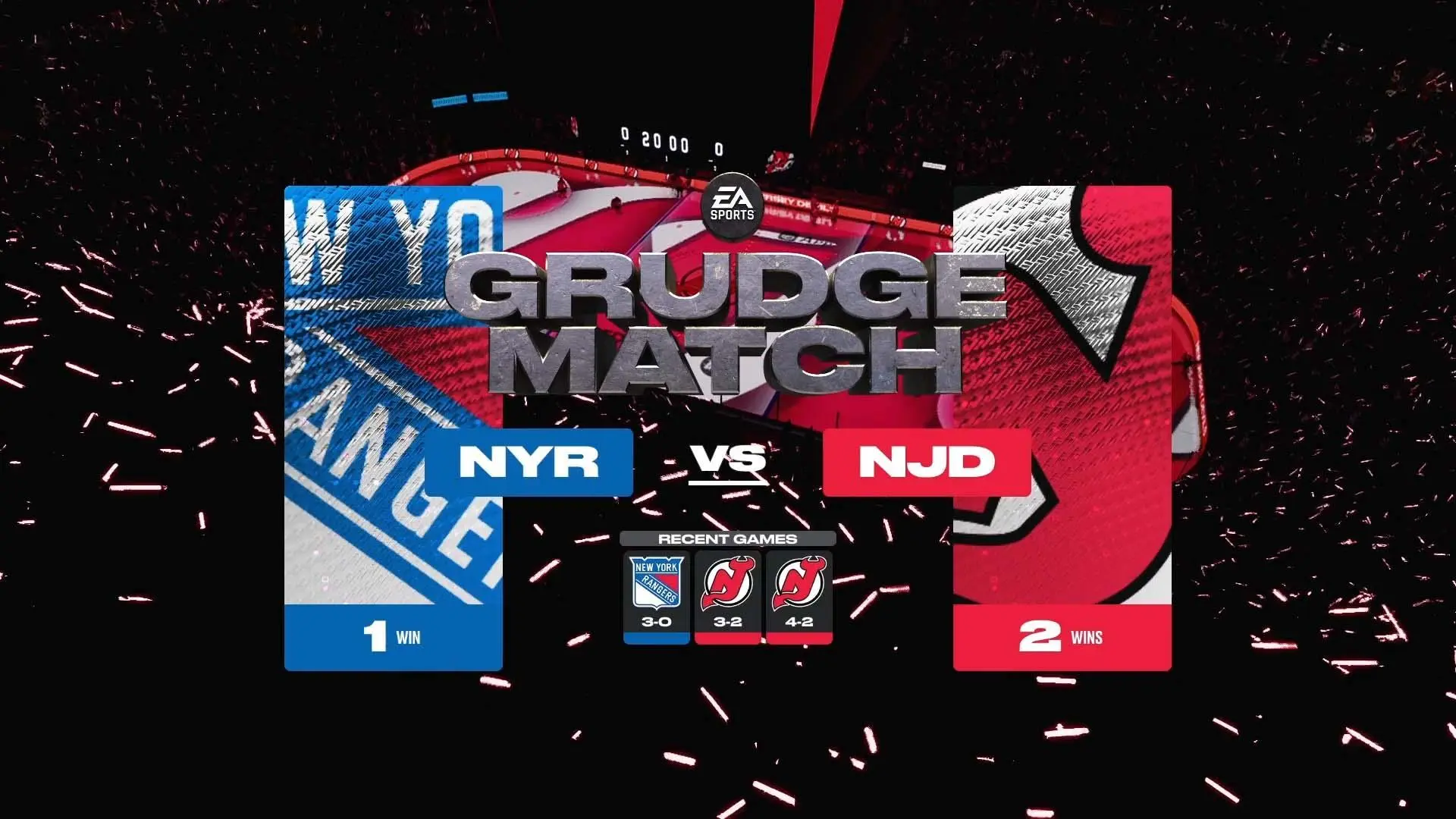
With Impact Players, the game rewards players who perform exceptionally well in previous matchups with special X-Factor abilities, which can give them an edge in future games. These abilities aren’t just cosmetic—they provide real, impactful bonuses that can swing the tide of a game. New cinematics and commentary further ramp up the tension, making each rivalry feel more heated and personal.
While the Grudge Match System does a great job of keeping long-term rivalries interesting, it would be nice to see further depth added to this mechanic in future entries. For example, incorporating more specific stat-tracking or dynamic storylines between teams could push this feature to the next level.
Infinite Camera System: Revamping Replays
One of the most notable improvements to presentation comes from the Infinite Camera System, which completely revamps the way replays are captured. Gone are the static, repetitive camera angles of previous games. Instead, NHL 25 introduces a variety of broadcast-inspired angles, including wire, drone, and static cameras that give you new perspectives on the action. The result is a more authentic, dynamic viewing experience that mirrors real-life broadcasts.
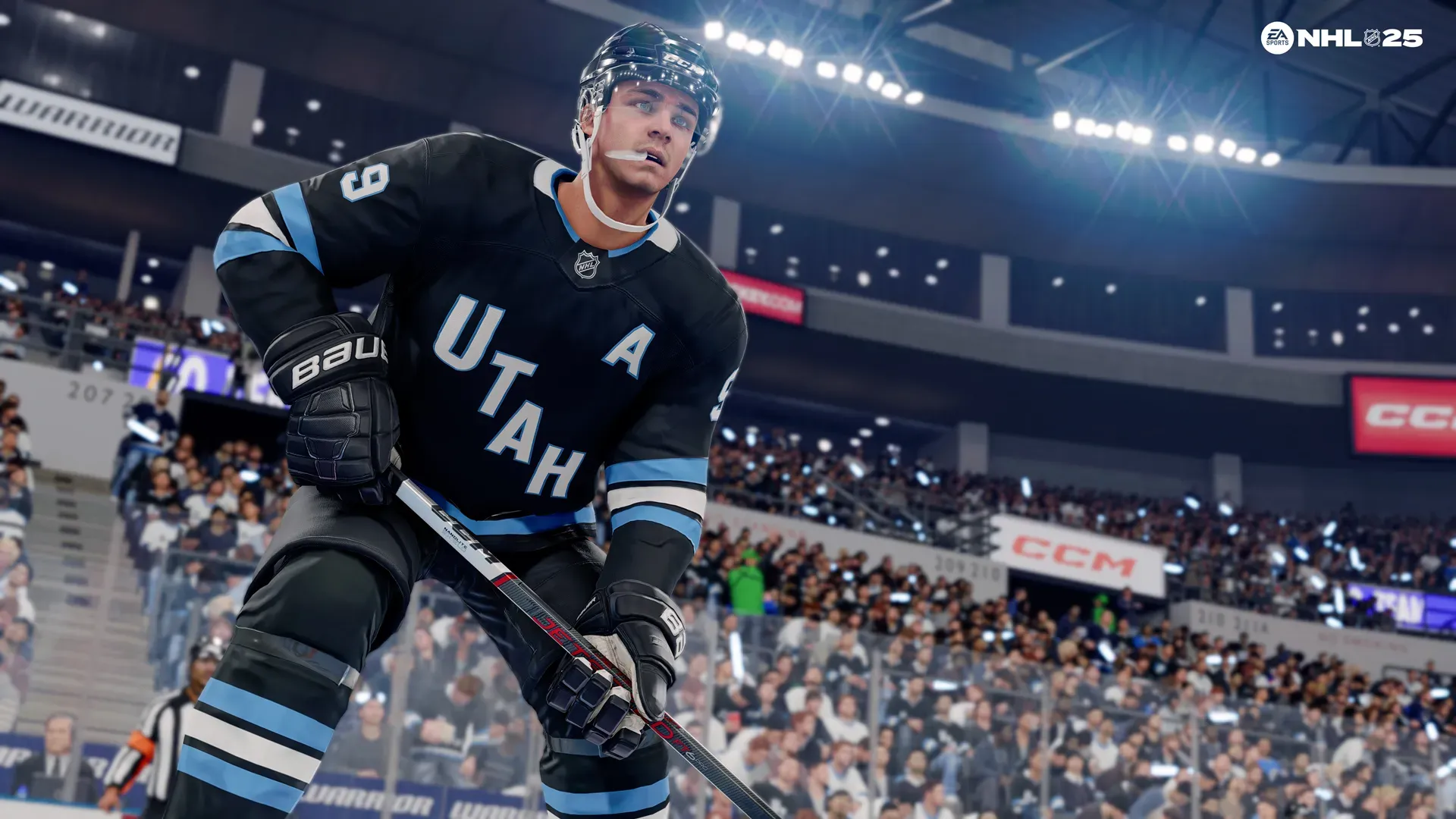
These new camera angles not only enhance the realism of replays but also give players a better view of critical moments, allowing for deeper analysis of goals, saves, and defensive plays. It’s a subtle improvement, but one that adds to the game’s overall presentation value.
New HUT Mode: Wild Card and Other Modes
One of the most exciting additions to NHL 25 is the new Wild Card mode in Hockey Ultimate Team (HUT). Replacing HUT Rush, Wild Card mode offers a fresh twist to the HUT experience by allowing players to draft a team using an established salary cap. The twist? You get three wild card slots, which provide more flexibility in team creation without dealing with overpowered rosters. This mode creates an interesting balance between strategic drafting and traditional gameplay, making for a more competitive experience. Players can use Wild Card mode to play online or offline, earning rewards that contribute to an additional progression path in HUT, while still gaining points toward overall HUT progression.
Wild Card mode is a smart addition that encourages more strategic thinking, as players must balance the wild card slots with the salary cap. This helps prevent some of the "super-teams" that can dominate in other HUT modes, offering a more balanced and rewarding experience. For those who enjoy building and refining their team but don’t want to face off against stacked rosters all the time, Wild Card mode is a breath of fresh air.
Unfortunately, the same can’t be said for other modes. For example, World of CHEL, EA’s popular online hub for casual multiplayer action, remains largely unchanged from last year. While CHEL has always been fun, it feels like EA missed an opportunity to innovate here. The lack of new features or significant upgrades leaves this mode feeling a bit stale. Hopefully, EA can give World of CHEL some much-needed attention in future updates or installments.
Franchise Mode: A Step Forward
Franchise mode has long been a fan favourite, and NHL 25 delivers several updates that make it more streamlined and enjoyable. The central hub is now much easier to navigate, with a cleaner layout that presents crucial information—such as player stats, league leaders, and box scores—in a more digestible format. The new features in Franchise mode, such as Playstyle Changes and the ability to ask players to alter their roles, add depth and strategy to roster management. This gives players more control over shaping their team and creating the perfect lineup.
The Contract Overlay and Collective Bargaining Agreement (CBA) features are welcome additions that make contract negotiations more intuitive. The inclusion of No Trade and No Movement clauses, along with new conversation functions, adds a layer of realism to managing your roster. These updates make Franchise mode feel more immersive and give it a real "general manager" vibe that hardcore fans will appreciate.
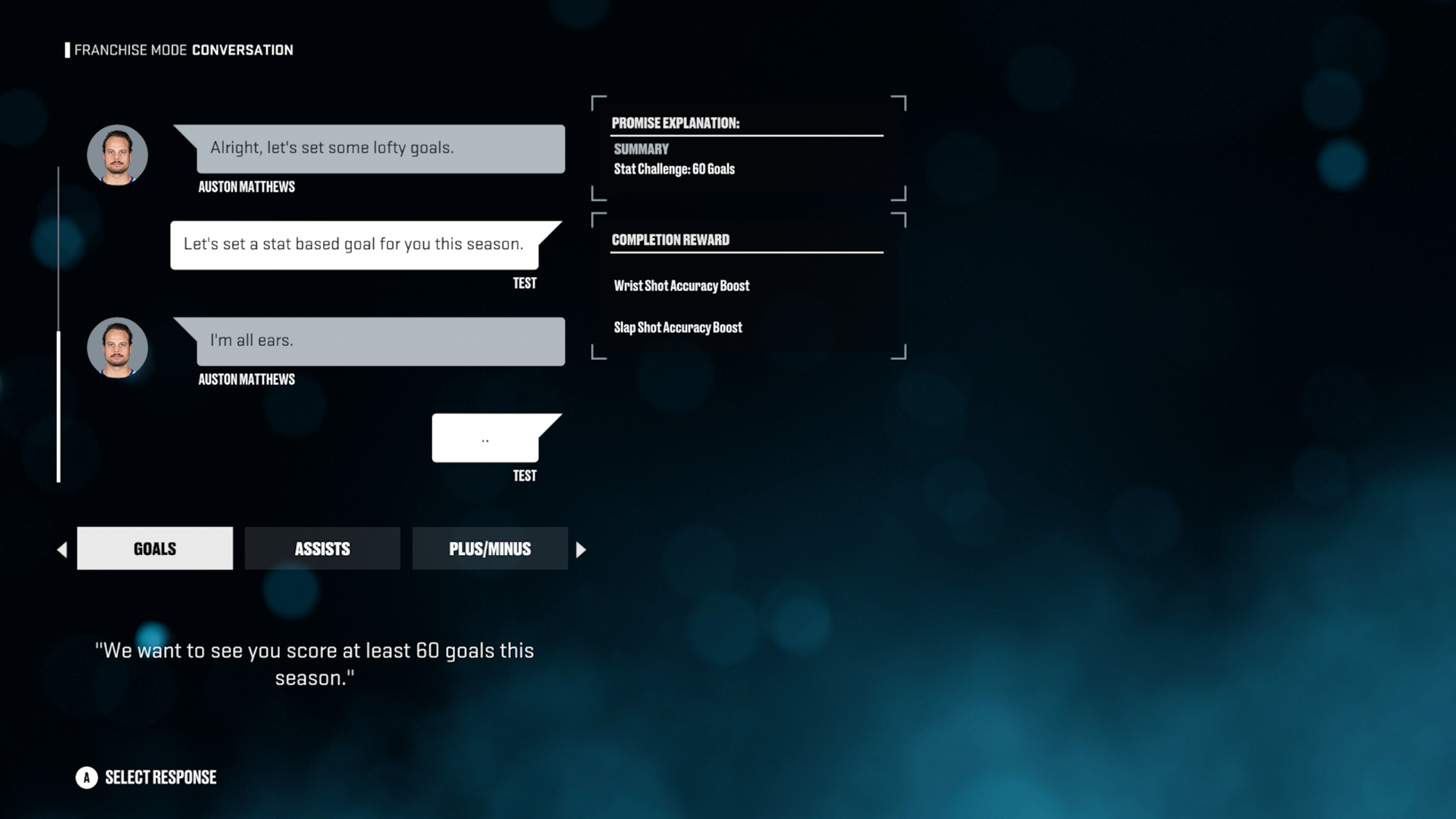
That said, Franchise Mode still feels a bit too similar to previous years. While these updates are welcome, they don’t fundamentally change the way the mode plays. For long-time fans, this could be seen as a missed opportunity for deeper innovation.
A Wishlist for Future Entries
While NHL 25 introduces several exciting new features, there are still areas where EA could take things further. Here’s a list of features and improvements that could elevate future installments:
- Bring Back GM Connected: Fans have been clamouring for the return of this mode, which allowed for community-run leagues. It’s high time for EA to bring it back, as the community aspect of sports games has never been more important.
- NHL 94 Controls: The absence of these simplified controls makes it harder for new players to jump into the series. EA should consider reintroducing these classic controls for casual players who want to enjoy the game without mastering complex mechanics.
- Deeper Customization: Player and team customization options are still somewhat limited. EA could expand these options, particularly in Be A Pro mode, where deeper role-playing elements could help create more personalized player journeys.
- Real-Life Rosters in Season or Franchise Mode: Some players just want to replicate real-life rosters without having to track all the moves made by other teams.
- PC Version is Needed: While the introduction of crossplay in recent years has been a welcome addition, the lack of a PC version when we've had previous entries on PC since 1996 is just odd.
- Include the PWHL: While the women’s representation in this year’s game doesn’t stand out like in previous installments, adding the Professional Women’s Hockey League (PWHL) would be a fantastic step forward once the league is more established. Now I'm sure they're waiting for the league to be more established, but they don't even show any women athletes on the main menu
Final Thoughts: Is NHL 25 Worth It?
NHL 25 is a mixed bag of exciting potential and familiar pitfalls. The game boasts impressive graphical upgrades and some innovative gameplay mechanics, particularly with the introduction of Wild Card mode and the improvements to Franchise mode. However, many areas, such as commentary, World of CHEL, and overall gameplay, feel like they’ve been carried over from NHL 24 without significant changes. For a game that’s supposed to mark a next-gen evolution, it feels too tethered to the past.
The inclusion of SAPIEN technology and the Frostbite Engine does wonders for player models and presentation, making NHL 25 visually stunning. However, this graphical leap only goes so far when the core gameplay and features don’t show the same level of innovation. While Wild Card mode is a fun and strategic addition to HUT, other areas—such as World of CHEL—lack new content or significant updates, which is disappointing for long-time fans.
Overall, NHL 25 is an enjoyable game, but it feels more like a refinement of previous entries than a bold step forward. It has its moments of brilliance, particularly in the presentation and new modes like Wild Card, but it ultimately falls short of fully realizing the potential of next-gen hockey gaming.
Final Score: 7/10
